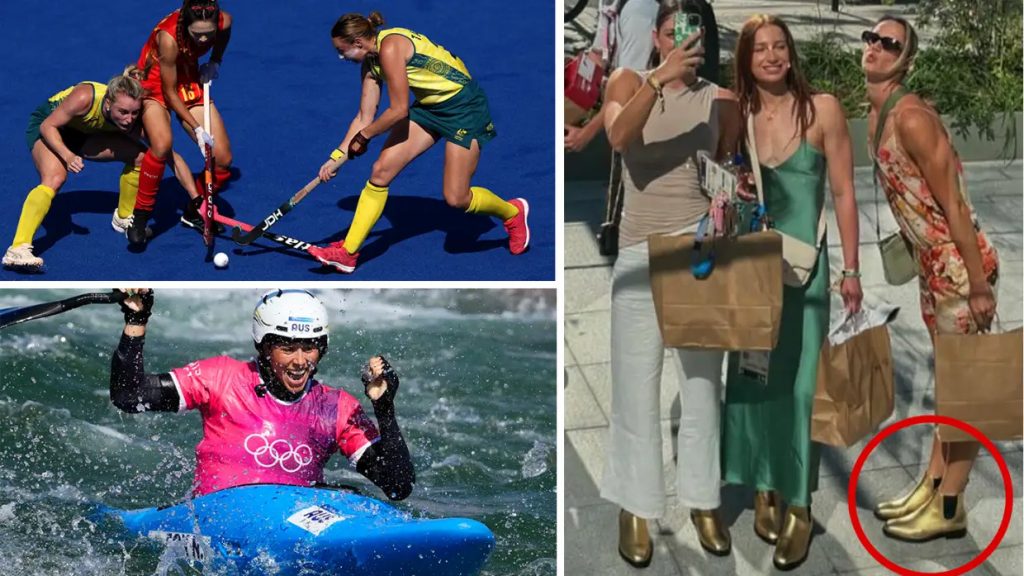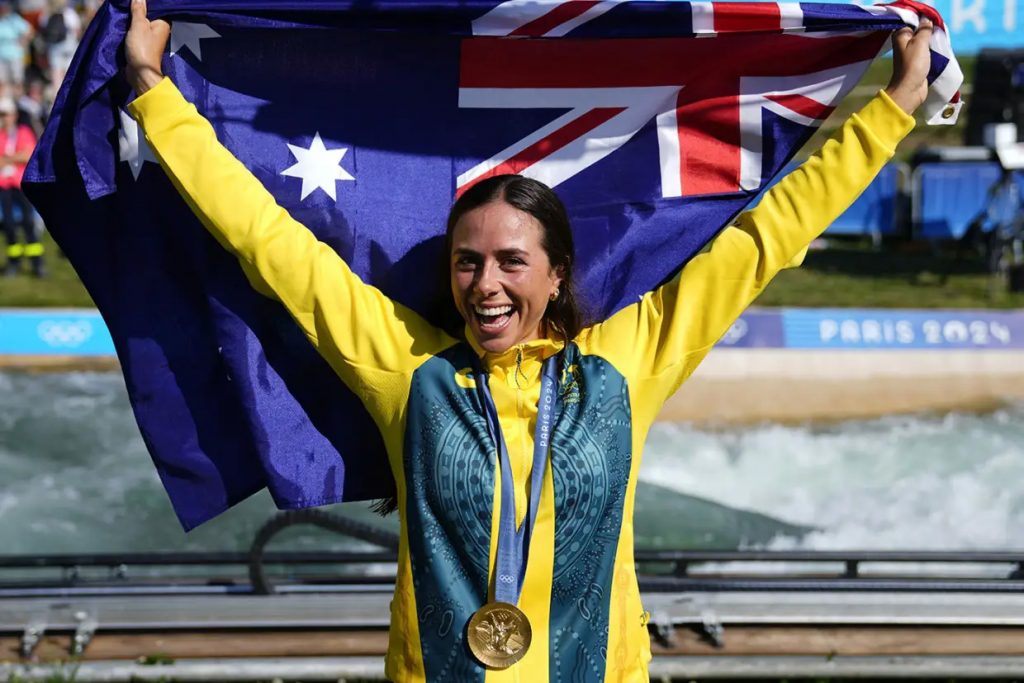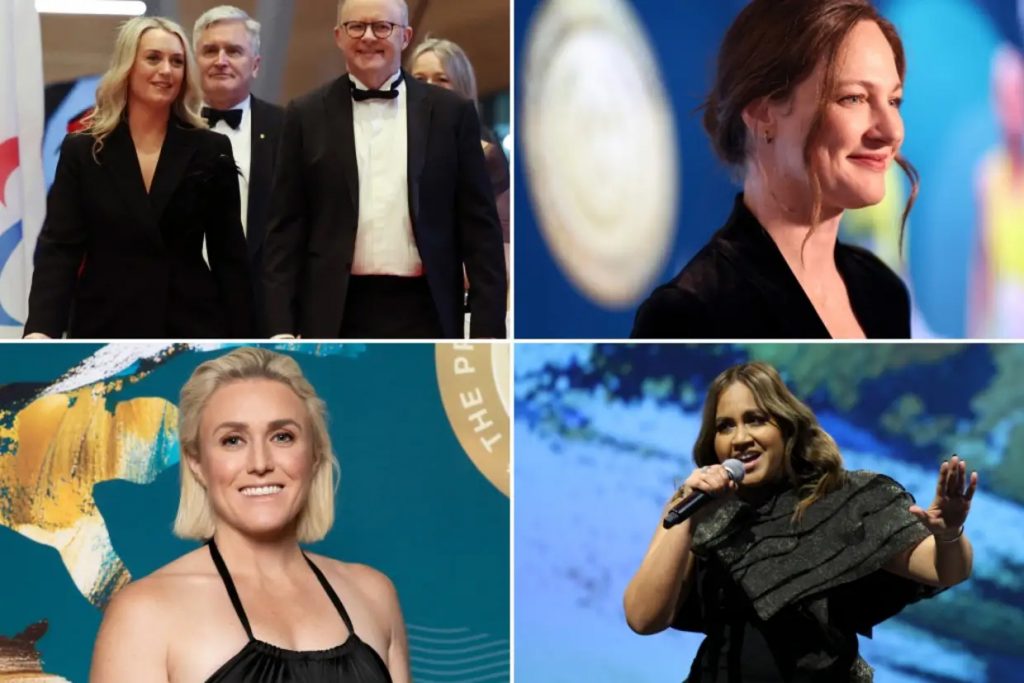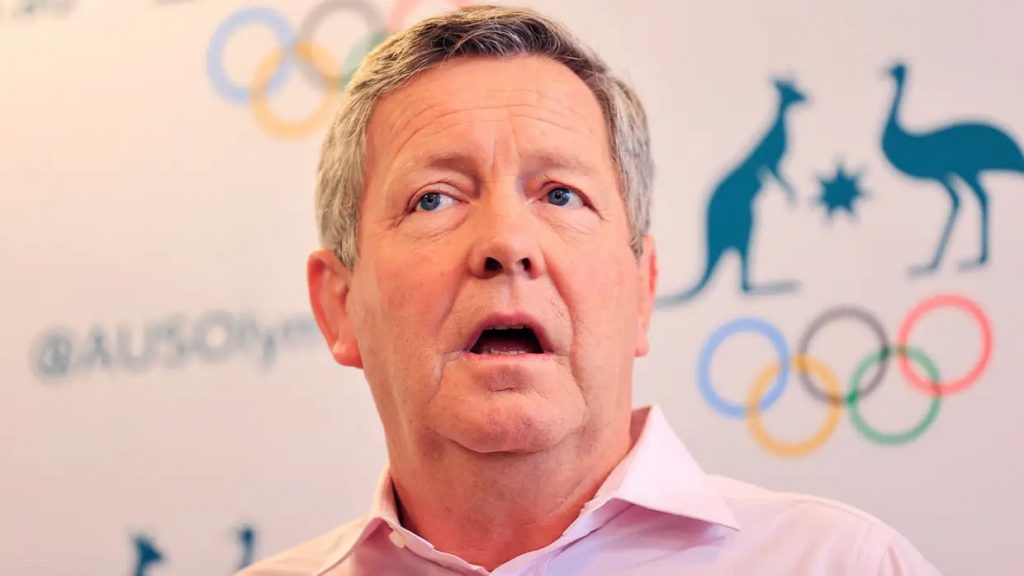
Article by Adam Peacock, courtesy of Nine.com.au.
Champagne glasses should be clinking.
It’s been a phenomenal fortnight in Paris, our best Olympic Games ever!
To those rivers of gold, ‘sante!’
With Brisbane 2032 looming in the distance, surely Paris will be a mere benchmark for greater things to come. Or will it?
Well away from the glory of Paris, and our lounge rooms filled with wonderment, there is intense manoeuvring behind the scenes on multiple fronts to future proof Australia’s Olympic standing.
Australia’s female athletes have exceeded expectations, faster, higher, stronger than ever.
But that’s happened right at a time when Australia’s two big domestic footy codes have billion dollar TV deals and the clear intent to scale up their women’s competitions.
For the AFLW it’s a matter of when, not if, full-time professionalism will come. NRLW is heading down the same path.
And while clear strategy remains a secret, an arms race for the best athletes heats up by the day.
While the relationship between female sports remains relatively collegiate for now, competition will only bubble to the boil once the footy codes go all-in with professionalism.
It’s not as if the talent pool for potential athletes is exploding in size.
Australia’s population is growing, but only steadily, thanks to a stagnating birth rate and controls on immigration.
WWOS spoke to multiple sources, who told of anecdotes of teenage prospects in Olympic sports like hockey and volleyball being attracted to join AFLW squads.
Volleyball is a sport that in the previous Olympic cycle had its funding slashed to zero, and consequently missed Paris.
Female hockey, even before the devastating loss to China in an Olympic quarter-final, is fearful of the near future.
Already funded less than the men’s program thanks to a benchmarking system based on medal chances — the Hockeyroos had 24 players in its full-time program leading into Paris, three less than the Kookaburras — those good enough to run around a hockey field at high speed are seen as ideal candidates to do the same on a footy field.
And this is in a world where China pours investment into its women’s hockey team. Reckon coaching legend Ric Chalesworth has gone there to help just to fill in spare time?
The central powers of hockey are getting bigger too, with the sport thriving in the Netherlands and Belgium, where participation numbers have gone from 100,000 to 300,000 in the last decade.
Of the domestic powerhouses, the AFL seems hesitant to push AFLW into full-time professionalism for now, with sources telling Wide World of Sports the governing body wants to see an uptick in corporate and membership, before it pushes the button. The counter argument from those in the game is to grow the revenue pie, a better product, facilitated by full time professionals, is needed.
Back to when, not if. When AFLW goes full time, the average wage should hit six figures.
Hockey can’t get near that. Most Olympic sports can’t.
One senior development coach in an Olympic sport, who preferred not to be named, summed it up as such.
“We can’t offer what AFLW can offer young women. The prospect of professionalism, opportunities with work or university. Even a blue tick on social media. It’s all part of it!”
*****
Olympic sports have long relied on the worldly nature of their various pursuits, which remains an attraction. That case was certainly bolstered for athletics in Paris given the feats of Australians at the Stade de France.
But for every Nina Kennedy, there are plenty of prospects who now have a choice she never had. A choice that might furnish a lifestyle quicker than trying to reach the top step at an Olympics.
It’s verging on a miracle Noemie Fox was able to win gold in Kayak Cross. While sister Jess rightfully has the backing of a suite of sponsors, Noemie’s preparation, until a few months ago, consisted of long train trips either side of training sessions, bookending a full day’s work in the Sydney CBD at a consultancy firm.
Philanthropy plays a big part in select Olympic sports, with Gina Rinehart’s backing of the swim team the most famous evidence. The mining magnate provides tiered personal funding to the best, the next best, and developing prospects, starting at around $30,000 per athlete. Not enough to live on, but enough to help further concentration on that pre-dawn black line without going into the red.
No wonder they were happy to wear those gold boots to last Monday’s celebration cruise on the Seine.

*****
Gold medal opportunities won’t be as plentiful in the next Olympic cycle with the inevitable demise of the Commonwealth Games.
For all the chortling about its relevance, its departure from the calendar takes away a crucial stage of development for younger athletes.
At Gold Coast 2018, Ariane Titmus won her first international gold. Nina Kennedy, Matt Denny, Nicola Olyslagers won their first important medals. Decent stepping stone.
Plus, many sports got a little boost in funding to prepare athletes for the Commonwealth Games. Money now expected to vanish.
All of which places more emphasis on the Australian Sports Commission, which is the body that includes the Australian Institute of Sport.
The ASC receives government funds, then distributes accordingly. Everyone, obviously, has their hand out. Much to the chagrin of many, funding has depended on performances at Olympic Games. Looking in a rear vision mirror to plot a path forward is an odd way to get better.
There is a widespread feeling amongst minor Olympic sports that everyone is equal, just some, with medals, are more equal than others.
Happily, the overall funding pie for Olympic and Paralympic sports is getting bigger, after a decade of recession.

A month before Paris, the Albanese government announced an extra $283 million boost for high performance sport, for both able bodied, and Para athletes, some of which goes directly to athletes to help prepare properly for international competition.
This package is for a two-year cycle only, and with a federal election in the middle, lobbying will continue.
The Australian Olympic Committee has mended what was a tense relationship with the ASC, emanating from a clashing of minds between former ASC chair John Wylie and the AOC’s kingmaker, John Coates.
The two now workshop, and lobby in unison, a strategy required with politics’ temperamental life cycle. Albo is no sure thing to be PM in a year. Paris will be a distant memory by then.

*****
One year ago AOC CEO Matt Carroll warned of a rough decade ahead and hinted at embarrassment in Brisbane 2032 if the government didn’t help plan accordingly for the future.
Carroll’s address to the National Press Club was a call to unite behind the Olympic cause for the good of the nation. He suggested a dedicated Ministry of Sport be established (presently, sport minister Annika Wells also looks after Aged Care).
Carroll argued the funding grab isn’t just for everyone to feel good about themselves, highlighting that every dollar invested in sport nets a $7 return in real economic value. Sport opens doors for trade, both abroad and in local communities.

The elite inspire, starting a trickle down effect.
A year on, Carroll’s words have gained importance thanks to one fortnight in Paris. But they’ll mean little for Olympic sports if adjustments aren’t made in an ever-changing landscape.
It’s not easy to make champagne corks pop so consistently.
Hate for it to go flat.
